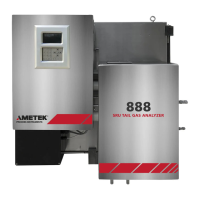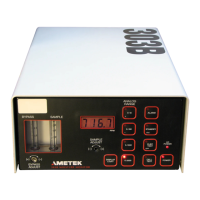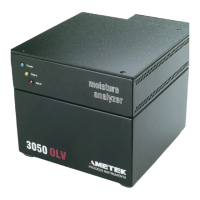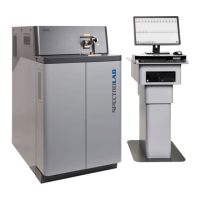Maintenance and Troubleshooting | 6-61
A Warning indicates the analyzer may require service and the data may be
suspect. Though all Warning alarms cause the Warning Status relay to de-
energize, the Warning Status relay can also indicate one of these analyzer
operating conditions:
• Performing a gas calibration (Auto-Zero, Zero, Span).
• Performing an analog output calibration.
• Performing Optical Bench setup.
• Flow Control is not in “auto”.
The Warning Status relay returns to the normal energized state automati-
cally when the offending alarm condition is corrected and/or the analyzer
completes one of the above operations.
A Fault indicates that a failure has been detected and the analyzer data is
not valid. Under the Fault situation, the analyzer de-energizes the Fault
Status relay and switches the sample system into “shut-in/shut-off” mode,
if the Flow Control setting is ‘0’ (auto). If the Fault Status relay is config-
ured as non-latching (Enable latching of fail alarm on the Alarm Setting
and Stream Switch Parameters dialog box is unchecked), the relay returns
to its normal energized state and the sample system is switched back to
“Sample” mode when the offending alarm condition is corrected. How-
ever, if the Fault Status relay is configured as latching (Enable latching of
fail alarm on the Alarm Setting and Stream Switch Parameters dialog
box is checked), the operator must unlatch the relay in one of the follow-
ing ways:
• If the Alarm Enable digital input is permanently wired to the Enabled
state, click the Conc. Alarm Soft Enable On/Off button (Status tab) to
temporarily Disable the Concentration Alarms and then click it again
to Enable them.
• If the Alarm Enable digital input is wired to a customer’s Data Acquisi-
tion System, have the system toggle that line from Enable to Disable
and then back to Enable at least one second later.
Setup (tab)Alarm/
Stream Switch

